
Netrokona District is a district of Mymensingh Division in north-east of Bangladesh.

Akhaura is an upazila of Brahmanbaria District, a district under Chattogram, Bangladesh. Akhaura Upazila has an area of 99.28 km2. The main river that run through this upazila is the Titas River. Akhaura played an important historical role during both World War II and Liberation War of Bangladesh.
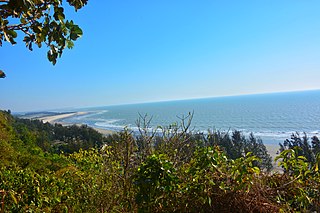
Ramu is an upazila of Cox's Bazar District in the Division of Chittagong, Bangladesh.
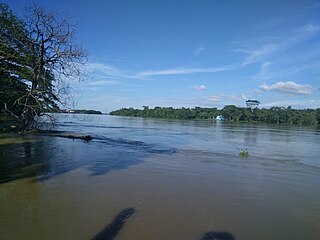
Balaganj is an upazila of Sylhet District in Sylhet Division, Bangladesh.

Bakshiganj is an upazila of Jamalpur District in the Division of Mymensingh, Bangladesh.

Pakundia is an upazila (subdistrict) in Kishoreganj District, Dhaka Division, Bangladesh. Its total land area is 180.52 square kilometres. It has a population of 237,218 residents. It was formed in 1922 as a thana. On 14 September 1983, it was turned into an upazila.
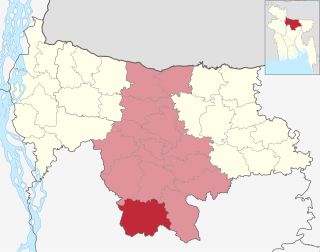
Bhaluka is an upazila of the Mymensingh District located in Bangladesh. It is one of the oldest small business hubs in the area.
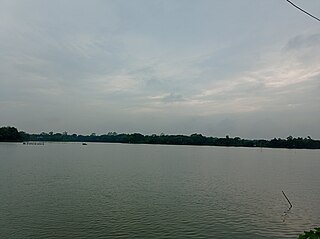
Fulbaria is an upazila of the Mymensingh District in Bangladesh.

Gafargaon is an upazila of Mymensingh District in the Division of Mymensingh, Bangladesh.
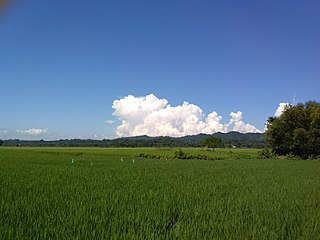
Haluaghat is an upazila of Mymensingh District in the Division of Mymensingh, Bangladesh.

Trishal is an upazila of Mymensingh District in the Division of Mymensingh, Bangladesh. The famous Bengali poet Kazi Nazrul Islam attended a school here.
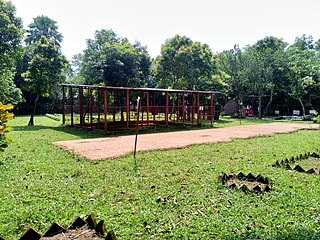
Belabo is an upazila of the Narsingdi District of Bangladesh, located in the Dhaka Division. Here the 2,500-year-old civilisation of Wari-Bateshwar has been discovered. It is believed that it was a port city with foreign trade with Ancient Rome, Southeast Asia and other regions. It is the oldest city so far discovered after Indus Valley civilisation. Though part of Narsingdi, the Bengali dialect spoken by the people of Belabo is similar to that of Greater Mymensingh.

Atpara is the smallest upazila of Netrokona District, in the Division of Mymensingh, Bangladesh.

Barhatta is an upazila of Netrokona District, located in Bangladesh's Mymensingh Division.

Durgapur is an upazila of the Netrokona District in the Mymensingh Division of Bangladesh.
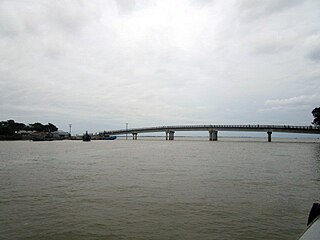
Khaliajuri is an upazila (sub-district) of the Netrokona District in Bangladesh, part of the Mymensingh Division.
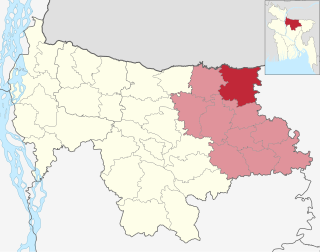
Kalmakanda, originally Karamakhanda, is an upazila of Netrokona District in the Division of Mymensingh, Bangladesh.
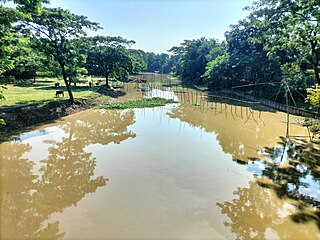
Netrokona Sadar is an upazila (sub-district) of Netrokona District under Mymensingh Division, Bangladesh.

Nalitabari is an upazila of Sherpur District in the Division of Mymensingh, Bangladesh.

Sreebardi is an upazila of Sherpur District in the Division of Mymensingh, Bangladesh.




















